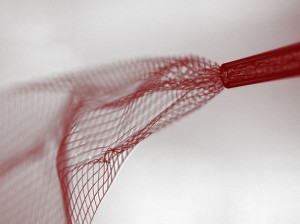Brain activity can be monitored with tiny flexible electronics which could roll up to fit in a pocket.
Charles Lieber, a nanoscientist and nanotechnologist at Harvard University, has designed latest ultra-thin electronics flexible enough to get stuffed into the needle of a syringe with a diameter as small as the average width of a human hair.
Traditional electronics are rigid and the procedures to measure brain activity would involve surgery; surgeons would make an opening equal to the size of the tissue or organ involved.
Currently available flexible electronics are usually flat sheets, designed to lie on surfaces. They help to monitor and manipulate living tissue but they can only be placed into the body by cutting a slit into the tissue that is as wide as the sheet itself which would be very risky.
Inventors have recently developed new flexible stretchable electronics which could roll up or fold to fit in a pocket .The new mesh flexible electronics are 1 million times more flexible and look like a tiny flat sheet about the size of a postage stamp made of metal electrodes and silicone wires that are a meter thick.
A variety of sensors can incorporated into these meshes. To feed the data from these sensors, one side of the meshes contains metal pads that researchers can hook up to outside wires. The flexible, thin nature of the wires and the porous quality of the meshes helps the devices to integrate into the living tissues they are implanted within.
When these are suspended in liquid and drawn into a syringe, the meshes naturally roll up into a scroll-like tubular shape. After they are injected they return back to their original shapes in less than an hour.
The injection process and ultraflexible electronics help prevent damaging the targeted tissues or organs. There is no scar around the injected area even months after implantation,
Scientists carried out these experiments on mouse brains to monitor their activity. The devices were able to network healthy neurons in the mouse and monitor their brain activity.
In the future, the researchers would like to see if their injectable devices can remain stable for long spans of time in the body. Such medical implants could help record and stimulate activity in the brain, such as in regions damaged by Parkinson’s disease.
For more information please visit:


Comments are closed.